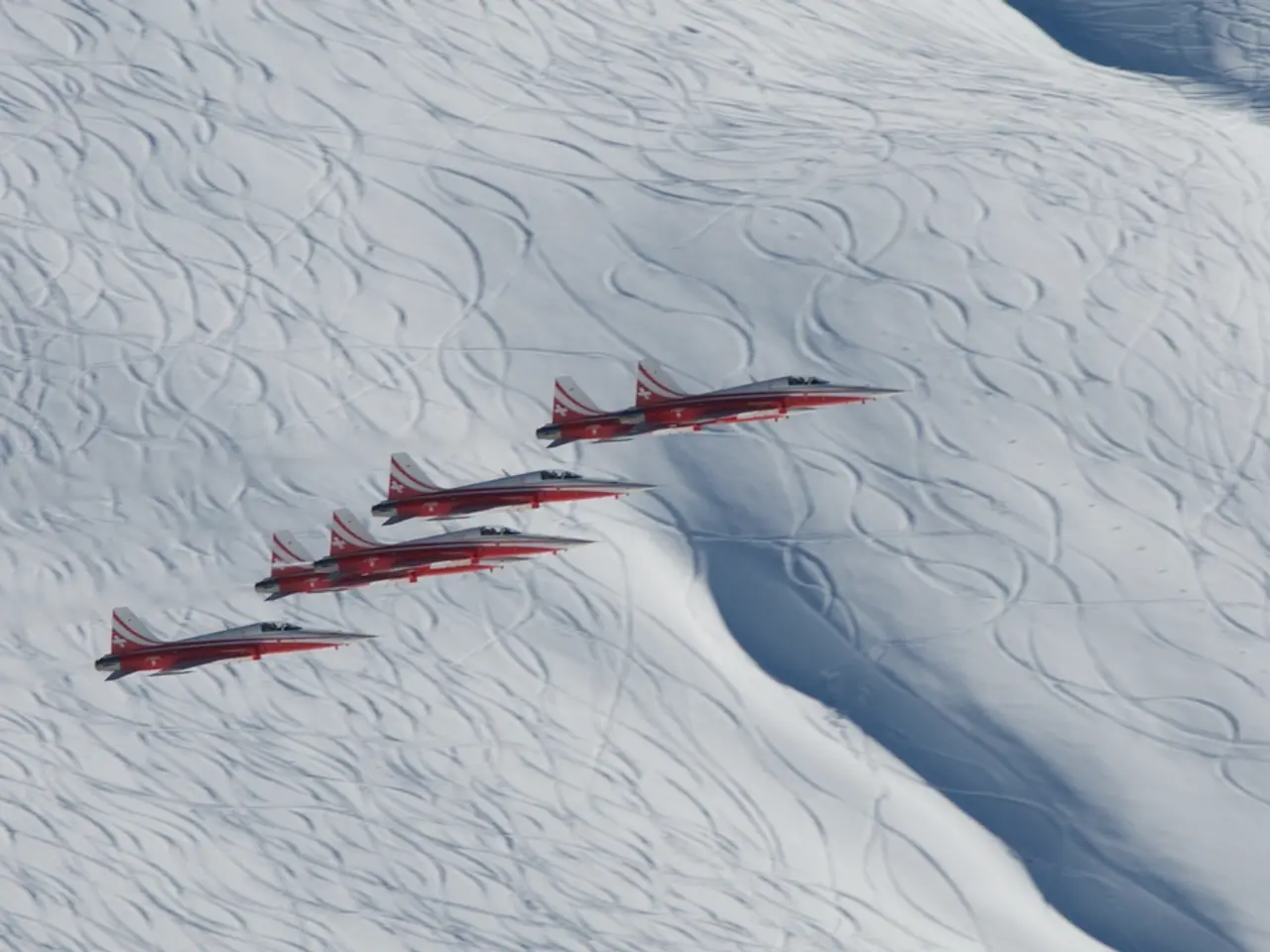Practical Advice for Soaring Drones in Cold Weather
Flying Drones Safely in Winter
As the cold weather sets in, it's essential to be mindful of the unique challenges that winter conditions present for drone pilots. To ensure a successful and safe flight, consider the impact of battery performance, visibility, and ice formation.
Battery Performance
Cold weather significantly reduces battery efficiency and flight time. Always fully charge batteries before flight and keep them warm prior to use, such as storing them in an insulated, warm place until just before takeoff[3]. Cold temperatures drain batteries faster, so it's crucial to monitor battery levels closely during flight.
Visibility
Ensure you can maintain visual line-of-sight with the drone at all times, flying below 120 meters and keeping safe distances from people and obstacles[1]. Winter conditions often reduce visibility due to fog, snow, or low light, so consider flying only in clear weather and daylight. Maintaining visual contact with the drone is more challenging in fog or snow, making it important to take extra precautions.
Ice Formation
Ice can quickly form on drone components, especially rotor blades, when temperatures drop below around -5°C with high humidity (>80%)[2]. Ice build-up reduces motor efficiency by up to 30% and affects flight control. While some advanced drones have rotor blade de-icing systems or sealed waterproof components to mitigate these issues[2], most consumer drones do not. To prevent ice accumulation, avoid flying in precipitation or freezing fog.
After each landing or battery replacement, it's important to check for ice on the drone's propellers.
Additional Tips
- Use drones designed or adapted for adverse weather with sealed airframes and waterproofing where possible[2].
- Keep flights short and monitor weather closely, avoiding wind, rain, or snow[5].
- Pre-warm and post-warm batteries and store the drone properly to prevent condensation damage.
Increasing the shutter speed and adjusting white balance settings can improve winter drone photography, as lighting conditions during winter can make photos and videos look dull[4].
Safety Considerations
- Winter temperatures are not optimal for drone battery performance, so it's advisable to reconsider flying the drone in heavy fog or light snowfall[1][2].
- In winter, do not wait for the RTH function to kick in due to depleted battery, as it may not be reliable in cold weather[5].
- Fog or snow may cause drone sensors to constantly detect obstacles, which can be misleading and potentially dangerous[1].
- Winter may not be the best time to fly at a 400-foot ceiling, as temperatures drop at higher altitudes during winter, so flying too high may not be ideal[1].
- It's best to keep drone batteries warm, either in a warm car or a well-insulated container[3].
In summary, maintain warmed, fully charged batteries, keep your drone in sight, avoid moisture and icing conditions, and fly only in clear, safe winter weather to minimize risks when flying drones in winter[1][2][3][5].
Drone technology can be affected significantly by winter conditions, particularly battery performance, visibility, and ice formation. To maximize battery efficiency and flight time in cold weather, drone pilots should ensure batteries are fully charged and kept warm before use.




